|
|
Wood Catalog - Under Construction!
| Sawmill Tour | Wood Drying | Wood Catalog |
Ever confusing is the choice of materials for a project, and although this section is intended to help with your selections it will probably introduce new options you've never even though of and confuse the situation even more. Artisans is here as a guide, we've been there done that with most of the common hardwoods and will help you select the best materials for your project.
The Wood Catalog section contains a variety of domestic and imported hardwoods and softwoods. The majority of these are available, depending on technical requirements and budgets, may be an option for your project. We'll highlight common materials we enjoy working with, and indicate some details of the pitfalls of some of the more exotic materials.
Many of the exotic imports are limited in availability, some only available as veneers.
Also note that woods may be listed multiple times in different milling configurations. We're working on a "Sawmill Tour" article that will describe the various methods of milling and drying lumber including definitions of quarter sawn, rift sawn, face cut, kiln dried, etc. Look for this article online shortly!
top of page
|

|
Alder: Alder "Alnus, rubra" Alder's value as a fine hardwood was identified early by the Japanese and Europeans who prized its light, consistent color, its uniform density, and its ability to take a variety of stains from natural to codovan. This last characteristic can provide alder with the look of other close grained species such as cherry and maple. A prolific, fast growing species which thrives in the lowlands of the Pacific Northwest. Alder is both a pioneer and a plantation species with more alder growing today than at any other time. Alder's ecological benefits when grown in conjunction with conifers is well documented by the USDA and forestry professionals. Some benefits of Alder are: Close-grain and fine texture, Uniform color and density, Stable pricing, Resistance to fading, darkening or yellowing in UV light and its environmentally friendly and prolific growth.
|
 |
Aniegre "Aningeria" Like many of the imports, Aniegre has been used around the world long before its common use here in America. It is commonly used in furniture, cabinetry and high-end millwork. Aniegre is harvested from Africa, mainly from the Western or Ivory Coast area. The heartwood is cream to tan in color with a pinkish tinge. It is found generally with straight grain, but sometimes wavy, producing a mottled figure. This figure is different, however, from the quartered sections which show a growth ring figure. The wood is lustrous in appearance. The texture is medium to fine. Due to the silica content of Aniegre, you will experience moderate to severe blunting of tools and need adequate support to prevent chipping out. The screwing, nailing, gluing and staining properties are good.
|
 |
Ash (Select) Ash "Fraxinus spp" Ash belongs to the olive family, although its only fruit is a dart-like winged seed. Ash is a popular species for food containers because the wood has no taste. It is found throughout the Eastern U.S. The sapwood is light-colored to nearly white and the heartwood varies from greyish or light brown, to pale yellow streaked with brown. The wood is generally straight-grained with a coarse uniform texture. The degree and availability of light-colored sapwood, and other properties, will vary according to the growing regions. Ash machines well, is good in nailing, screwing and gluing, and can be stained to a very good finish. It dries fairly easily with minimal degrade, and there is little movement in performance. Ash has very good overall strength properties relative to its weight. It has excellent shock resistance and is good for steam bending. Furniture, flooring, doors, architectural millwork and moulding, Kitchen cabinets, paneling, tool handles, baseball bats, sporting equipment and turnings. It is particularly suitable for food and liquid containers since there is no odor or taste.
|
 |
Ash (Quarter Sawn)
|
 |
Ash (Curly)
|
 |
Basswood: Basswood "Tilia americana" The name comes from its inner bark, or bast, used by Native Americans to make rope. The sapwood of basswood is usually quite large and creamy white in color, merging into the heartwood which is pale to reddish brown, sometimes with darker streaks. The wood has a fine uniform texture and indistinct grain that is straight. Basswood machines well and is easy to work with hand tools making it a premier carving wood. It nails, screws, and glues fairly well and can be sanded, and stained, to a good smooth finish. It dries fairly rapidly with little distortion or degrade. It has fairly high shrinkage but good dimensional stability when dry. Common uses for basswood are: Carvings, turnings, furniture, pattern-making, mouldings, millwork and musical instruments. An important specialized use is Venetian blinds and shutters.
|
 |
Beech (European)
|
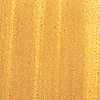 |
Benin
|
 |
Birch (Flamed): Birch "Betula papynfera" Wide sapwood, creamy white in colour with a pale brown heartwood. Straight grained, and texture fine and uniform. The wood has a moderately good bending classification, low stiffness, and medium crushing strength and resistance to shock loads. The timber works well with most hand and power tools with moderate blunting of cutting edges. Curly grained material is liable to pick up in planing and a 20� angle should be used. It glues, stains and polishes well. Mostly used as a turnery wood for dowels, spools, bobbins, hoops, domestic woodware, toys, agricultural implements. The best butts arc selected for peeling into veneer for plywood or sliced into decorative veneers, depending on the degree of attractive figure present. Other names: American birch (UK); white birch (Canada).
|
 |
Bloodwood: Bloodwood "BROSIMIUM RUBESCENS" This beautiful heavy wood is as red as blood and as smooth as silk. It has been used principally as an accent wood for fancy box making as well as for billiard cue butts, drum sticks, xylophones and organ pipes. Originating in Brazil, French Guiana and Suriname, other names for it are Satine Rouge, Conduru and Satinjout. This wood is very resistant to bugs and decay, and its resistant properties contribute to possible allergic response to the dust. A dust mask must always be used while working with this wood.
|
 |
Bocote: Bocote "Cordia alliodora" Sought for its great beauty and ease of working, bocote is in great demand for boat decking, fine cabinetry, fine furniture, decorative and figured veneer, moldings, inlay work, joinery, and turnery. Bocote is sometimes used as a substitute for mahogany, teak or walnut. Bocote is a particularly fine, beautiful wood, with colors varying from light to golden brown and variegated irregular markings. It has an attractive ray fleck figure if quartersawn. Bocote is a strong lustrous wood, with medium and uniform texture and straight or shallowly interlocked grain. Woodworking properties include being easy to workwith, responds well to both hand and machine tools, is easily glued, and takes nails and screws well. It also polishes to a smooth finish, and stains and glues well. Bocote's bending strength is comparable to teak, and compression strength is comparable to mahogany. It is highly resistant to insects.
|
 |
Babinga (Curly)
|
 |
Babinga (Marbled)
|
 |
Babinga (Pomelle)
|
 |
Babinga (Quarter Sawn)
|
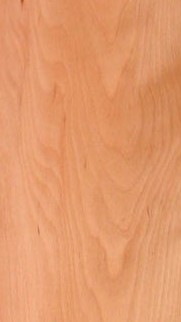 |
European Steamed Beech "Fagus, slyvatica" European Steamed Beech is widely used in furniture where its light orangey tan color along with its fine graining and small rays offer a distinct contemporary look. The European Steamed Beech pictured here is Quartersawn. Note the medullary ray flecks that give quartersawn lumber its distinctive look.
|
 |
Babinga: Bubinga "Guibourtia spp" Bubinga has a resemblance to rosewood. Fine furniture and cabinetwork, musical instruments, decorative veneers, fancy turnery, inlay work. Heartwood pink, vivid red, or red brown with purple streaks or veins, on exposure becomes yellow or medium brown with a reddish tint, veining becomes less conspicuous; sapwood whitish and clearly demarcated. Texture fine and even; grain straight or interlocked; lustrous; sometimes highly figured.
|
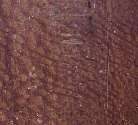 |
Beefwood "Grevilea striata" Also called Desert Beefwood, it is found in Australian deserts. Fine, lace-like (oak rays) figure in deep red wood. Hard and dense. Finishes well with oils or with surface finishes, avoid inhaling and contact with wood dust. Does not require stabilizing.
|
 |
African Blackwood "Dalbergia melanoxylon" Heartwood is dark purple-brown with dark black streaks and the sapwood is creamy white. The small tree is reported to often develop more than a single stem. It usually grows to a height of 15 to 20 feet, but may occasionally reach 50 feet (15 m). The bole is often short, fluted, and rarely cylindrical, with diameters that are seldom more than 12 inches. The Wood is very nice to work, but very hard. Takes an exceptional polish and is the "Turning wood of Kings" for nothing holds fine detail as well as African Blackwood. Typical uses: Musical instruments such as clarinets, oboes, etc. and turnery. Source Region: Africa, from Sudan southward to Mozambique, westward to Angola, and northward to Nigeria and Senegal. The tree is also reported to grow in western India.
|
 |
Australian Blackwood "Acacia melanoxylon" Heartwood is golden to dark brown with a slight reddish tinge and regular dark chocolate brown splotches. The tree grows to 80 feet high and a diameter of about 60 inches. Also called Black Wattle. Fine texture, straight grain. Machining characteristics are good, but irregular sections should be machined with care and attention. Takes an excellent finish. Very similar to Koa. Typical Uses: Furniture, gunstocks, decorative veneers, cabintry, interior woodwork. Source Region: Australia.
|
 |
Butternut: Butternut "Juglans Cinerea" Butternut is commonly used for furniture, cabinets, instrument cases, and general decoration millwork. It resembles Walnut in texture, but is lighter in color and much poorer in all strength categories. It is a beautiful wood in decorative applications. Butternut works well with both hand and machine tools, and is good for nailing, screwing and gluing. The heartwood is medium brown to tan, but otherwise resembles the grain of the American Black Walnut. The grain is coarser but soft. Unlike Walnut, Butternut is generally not steamed. The wood is non-durable and does not take preservation treatment well.
|
 |
Canarywood "Centrolobium microchaete" Yellow to orange with streaks of red, purple and black. The tree is a medium sized to large well-formed tree; generally up to 100 feet high with diameters of 30-50"; commonly to heights of 40 feet and diameters up to 16". Narrow buttresses. The wood is a medium texture and weight with open pores. Easy to work. Turns nicely and takes a high natural polish. Typical Uses: Furniture, doors, flooring, interior millwork, turning. Source Region: Brazil, Bolivia
|
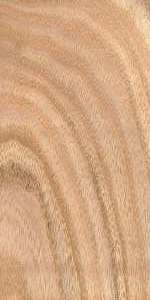 |
Catalpa (Catalpa speciosa) Also know as Northern catalpa, Western catalpa, Catawba, Hardy Catalpa, Indian Bean Tree, Cigar tree Catalpa is a short-trunked, broad-crowned tree, growing to 50 feet high. Used primarily as an urban shade tree, Catalpa may reach heights of 70 feet tall and 40 feet wide. Formerly ultivated widely in rural areas as a source of rot-resistant, lightweight fence posts. Catalpa wood is straight grained with light gray-brown or buff-colored heartwood and light cream-colored sapwood, sometimes with an olive tinge. The color differences between growth rings, early to late, which can be very wide. The wood can almost look iridescent as it changes color when viewed from different angles. Soft, weak, and brittle with very good decay resistance and dimensional stability. Exudes a strong creosote-like odor. Turns well. Excellent for working with hand tools - almost on par with white pine or spruce. It also bleaches well. Due to its porosity and softness the bleach goes deep so the raised grain can be sanded and still maintain the lighter "Ginger Ale" tone. Catalpa jewelry box. Mainly used for fence posts, rails, beams, and crating. Also good for turned articles and carving due to softness and stability. Other uses include millwork, framing, forms, secondary furniture wood, and drawer sides. Generally not available as veneer or plywood. Rarely used as a primary cabinet wood. However the fine coloring and figure of the wood suggest it would be suitable. A close cousin of the Northern Catalpa is commonly used in the orient to fashion high-quality furnishings.
|
 |
Cebill
|
 |
Cerejeir
|
 |
Chechen
|
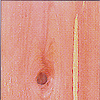 |
Cedar - Aromatic
|
 |
Cherry (Quarter Sawn Currly)
|
 |
Cherry (Currly)
|
 |
Cherry: Cherry "Prunus serotina" The heartwood of cherry varies from rich red to reddish brown and will darken with age and on exposure to light. In contrast, the sapwood is creamy white. The wood has a fine uniform, straight grain, satiny, smooth texture, and may naturally contain brown pith flecks and small gum pockets. Cherry is easy to machine, nails and glues well and when sanded and stained, it produces an excellent smooth finish. It dries fairly quickly with moderately high shrinkage, but is dimensionally stable after kiln-drying. The wood is of medium density with good bending properties, it has low stiffness and medium strength and shock resistance. Common uses for cherry include fine furniture and cabinet making, mouldings and millwork, kitchen cabinets, paneling, flooring, doors, boat interiors, musical instruments, turnings and carvings.
|
 |
Cebil "Anadenanthera macrocarpa" Color: Reddish brown with nearly black streaks. A medium sized tree reaching height of 80 feet with trunk diameter of 24-36". Fine uniform texture. Hard, heavy and very durable. Difficult to work because of its extreme hardness. Turns well. Typical Uses: Industrial applications, flooring, tool handles. Source Region: Paraguay, Argentina, Brazil
|
 |
Chechen "Metopium brownei" Also known as Black Poison Wood, Chechen's color ranges from amber to dark brown, often with a range of colors and contrasting streaks. This wood is quite hard, dense, and tight-grained. With care, a beautiful, lustrous finish can be obtained. Slightly oily, but not as much as teak. An excellent furniture-making wood that is suitable for a variety of other applications. Very rot resistant. Chechen grows in Mexico and Central America.
|
 |
Cocobolo:Cocobolo "DALBERGIA RETUSA" Cocobolo is a member of the Rosewood family. It grows in the drier uplands on the Pacific side of Mexico down to Panama. Extremely oily it will reject almost any finish except wax. It shines up to a nice luster. Even an oil based varnish will not stick. There is no treatment that will make it suitable for bonding with glue, but it can be nailed or screwed easily. It is waterproof which is excellent for making knife handles. It smells like lilacs while it is being sawn or sanded. It varies in color from red to yellow and striped with black to lighter black. It darkens with age.
|
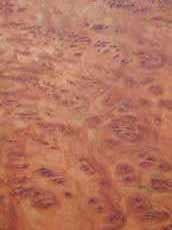 |
Coolabah "Eucalyptus microtheca F.Muell" Height to: 20 m. Diameter to: 1.0 m. Red to dark brown. Hard, strong, interlocked grain. This famous tree of Banjo Patterson's "Waltzing Matilda" inhabits the arid and semi-arid open woodland zones of Australia. It grows on seasonally inundated country around swamps, billabongs and lagoons and in open belts along watercourses, preferring a clay subsoil. The spread of the tree is often as great as its height, providing much needed good shade in these hot areas. Its bark can vary between rough and grey to almost black in colour in some; to deeply furrowed in older trees; to smooth, whitish to pale grey and powdery in others. These differences can make the identification of the species a bit perplexing to the casual observer. The common name is of Aboriginal origin but has also been known as "Yathoo" or "Callaille". Aborigenes used parts of the tree to treat snakebite and its wood is one of the hardest of the Eucalypts.
|
 |
Cypress "Taxodium distichum" Pale yellow to yellowish red, often salmon-colored. A large tree usually 100-120 feet tall with a trunk diameter up to 60". An aquatic tree preferring very wet, swampy areas. The Wood is very distinct leafy grain. Annual rings combine soft, open-meshed spring wood, and hard, close-grained summer wood. Strong and light, very durable and naturally resistant to decay. Soft, easy to work, sand and finish. Typical Uses: Outdoor application, furniture, boat building.
|
|
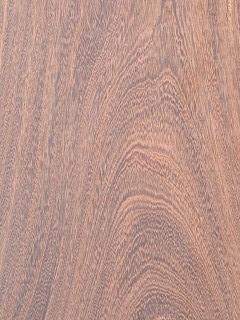
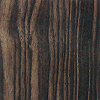
|
Ebony: Brown Ebony "Caesalpina paraguariensis" Brown Ebony, from the Argentine, is a very dense, dark brown wood with a very pleasant grain configuration. It does not change color over time, works well, and is kiln dried so as to be very stable. A very dense, dark-brown wood with an incredible 3-D figure in edge-grained portions. Appears to work well and be very stable. Provides an excellent polish. Like it's cousin, African Black Ebony, the Brown Ebony makes great fingerboards, inlays, and accents. Beautiful in its own right, it pairs up well with other woods. Not overly oily, it glues up well, cuts easily, It is necessary to drill a pilot hole for screws. Although it polishes up to a lovely sheen, any finish will hold to it very well, either laquer or polyurethane. As a dark wood to be used in place of Black Walnut in bowl segmenting, Brown Ebony works very well. It makes a dignified knife handle for a "gentleman's" hunting knife, and does not need to be stabilized.
Gabon Ebony "Diospyrus Crassiflora", is a very dense, very hard wood with straight to slightly interlocked grain. Very fine textured. Gabon ebony is believed to be the blackest wood that grows. Tool, cutlery and knife handles, door knobs, butt ends of billiard cues, piano and organ keys, violin and guitar finger boards, other musical instrument pieces, turning, fancy articles and inlay. Working properties include being a very hard wood to work with hand or power tools, with severe blunting effect on cutters. In planing, a reduced angle of 20 degrees is required when irregular grain is present, with an increase in pressure bar and shoe pressures advised to prevent the wood from riding or chattering on cutters. Pre-boring is necessary for nailing and screwing. Takes glue well, and it can be polished to an excellent finish.
|
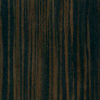 |
Ebony - Predied
|
| |
|
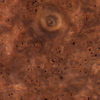 |
Elm (Burl)
|
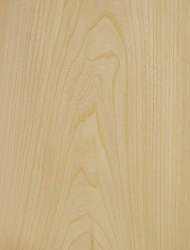 |
Gray Elm Ulmus rubra Muhl. (Ulmaceae) Common Names slippery elm, American tree, elm, gray elm, Indian elm, moose elm, red elm, rock elm, soft elm, sweet elm, tawny elm. A tree 60 to 70 feet in height, with dark green leaves 5 to 7 inches long, 2 to 3 inches wide, nearly oval-shaped, rough above and hairy beneath. Twigs are rough and ashy gray in color. Buds are dark colored and hairy. Buds at branch ends usually have orange tips. Inner bark is mucilaginous with a somewhat aromatic flavor. Upon soaking in warm water, the inner bark of this tree produces a mucilage that can be used as a protective, demulcent, emollient, laxative, and vulnerary. The pollen is allergenic. In Appalachia, a tea made from the bark is used as a laxative.
|
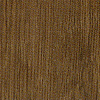 |
Oak (English Brown)
|
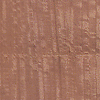 |
Eucalyptus (Figured Jarrah): Eucalypt "Eucalyptus obliqua" Pale brown to light brown, somewhat silvery. The tree has reported to reach heights of 300 feet with trunk diameters of 36"-48". Boles are often straight and long. The Wood is coarse and open texture; straight grain with fiddleback or curly figure. Also called Messmate Stringybark, or Brown-top Stringybark. The wood responds to machining and hand tools with little difficulty. Typical Uses: Parquet flooring, paneling, veneers, fine furniture, tool handles. Source Region: Oceania: Australia, Tasmania
|
 |
Goncalo (Curly)
|
 |
Goncalo: Goncalo Alves "ASTRONIUM LESCOINTEL" This fine, tight grained wood comes from Brazil and Central America. Because of its distinctive striped grain, it is sometimes mistakenly referred to as Zebrawood. Rather than sand this wood you should smooth it with a cabinet scraper because it is so finely textured that sand paper will scratch it. This wood is rare and not always available.
|
 |
Granadillo: Granadillo "IPLATYMISCIUM ULEI" From Central and South America, particularly Suriname, Honduras and Venezuela. Also called Coyote, Guayacan, Macacauba and Trebol. This is an extremely hard, satiny, reddish brown wood with charming light cream colored highlights and swirling grain. It looks like a cross between Honduras Rosewood and Cocobolo, but does not have the allergenic properties of either of them. Granadillo has been used in the making of all types of furniture, musical instruments, sporting implements, xylephones and even umbrella handles.
|
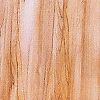 |
Gumwood
|
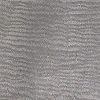 |
Harewood
|
 |
Hickory: Hickory "Carya spp" Hickory's properties make it ideal for tool handles, furniture, cabinetry, flooring, paneling, wooden ladders, dowels and sporting goods. Westward trekking pioneers made hickory a prerequisite for their wagon wheels. Hickory is the hardest, heaviest and strongest American wood in the common use. The sapwood of hickory is white, tinged with inconspicuous fine brown lines while the heartwood is pale to reddish brown. Both are coarse-textured and the grain is fine, usually straight but can be wavy or irregular. Hickory can be difficult to machine and glue, and hard to work with hand tools, so care is needed. It hold nails and screws well, but there is a tendency to split so pre-boring is advised. The wood can be sanded to a good finish. The grain pattern welcomes a full range of medium-to-dark finishes and bleaching treatments. It can be difficult to dry and has high shrinkage. The density and strength of the hickories will vary according to the rate of growth, with the true hickories generally showing higher values than the pecan hickories. The wood is well-known for its very good strength and shock resistance and it also has excellent steam-bending properties. Extremely tough and resilient, even texture, quite hard and only moderately heavy.
|
 |
Holly: Poplar "Liriodendron tulipifera" Grayish white sapwood with greenish brown heart. A tall, stately tree. May reach 150 feet high with a trunk up to 10 feet and free of branches for up to 90 feet. The Wood is fine textured, soft and lightweight. Easily worked and takes paint exceptionally well. Frequently finished to look like other woods. Typical Uses: Furniture.
|
|

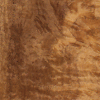
|
Imbuia "Phoebe porosa" Heartwood yellow-olive to chocolate brown, with variegated streaks and stripes. An evergreen that sheds most of its leaves in August/September. Reaches a maximum height of 130 feet with a trunk diameter up to 72". The grain is usually straight but often wavy or curly, with fine and even growth rings visible. Fine to medium texture. Not strong and has a very low wood bending classification. Moderately stable, fairly hard and heavy. Typical Uses: High class furniture and cabinetmaking and superior joinery. Source Region: Southern Brazil.
|
 |
Ivorywood:
|
 |
Jarrah Blue "Eucalyptus marginata Donn ex Smith" Height to: 40 m. Diameter to: 2.0 m. Dark red to reddish brown. A hard, coarse textured wood which finishes well. Jarrah is one of Australia's most important commercial hardwoods which grows in the south-west of Western Australia, mainly in the wet sclerophyll forests where rainfall is in the 700 - 1250 mm. per annum range. It occurs in almost pure stands where, with favourable conditions, it can attain a height of 40 m or more and mature trees have been known to be over 600 years old. However in poor conditions, such as on the stony slopes of the Stirling Range, it may only grow 2m. high. Although the wood itself is very durable and does not even burn very easily, the tree can suffer from dieback disease caused by the fungus Phytophthora cinnamomi resulting in quarantine measures being implemented within the forests to arrest the spread of the fungus. It has been used extensively as a heavy engineering timber (piers, bridges, railway sleepers etc.) due to its strength, durability and ease of splitting along its grain; in fact Jarrah is still on the London Underground's specification list as a timber suitable for its seepers. Nowadays, since the advent of hardened steel tools, it is also being used as an extremely attractive cabinet timber. The timber of the Jarrah is very similar to Karri (Eucalyptus diversicolor). The bushman's test to distinguish between the two is to burn a splinter; if it leaves a white ash it is Karri, if it is black or grey it is Jarrah.
|
 |
Jatoba: Jatoba "HYMENAEA COURBARRI" Grows throughout Central and South America. Popular for the building of bridges and abutments. The bark is used to produce Copal, which is marketed as an ingredient in varnishes and paints. After drying, care in storage is a necessity, as the cut boards can warp and crack easily. End sealer before working is a recommendation. Red-orange in color, the wood from this tree can be as wide as 14". Over time the color will mellow to a more russet.
|
 |
Lacewood
|
 |
Lemonwood
|
 |
Lignum Vitae: Argentine Lignum Vitae "Bulnesia sarmientoi" This close relative to the famous tropical Lignum Vitaes is similar in appearance and working properties. An olive-green wood which is characteristically very figured. This resinous wood has an oily feel and a strong spicy-sweet fragrance. Often used for turning, this wood provides an excellent polish. The Argentine name "Palo Santo" literally means, "Saint Wood".
|
 |
Mahogany - African: African Mahogany "Khaya ivorensis" The heartwood is a light pink-brown that darkens when cut to a reddish brown. It has a medium to coarse texture and a straight to interlocked grain, which can yield a striped or roe figure. The wood finishes well and has a lustrous quality. African mahogany is used for furniture and cabinetry, musical instruments, paneling, boat building, veneer, office and shop fixtures, interior joinery, staircase banisters, handrails and domestic flooring.
|
 |
Beeswing Mahogany "Khaya ivorensis" The heartwood is a light pink-brown that darkens when cut to a reddish brown. It has a medium to coarse texture and a straight to interlocked grain, which can yield a striped or roe figure. The wood finishes well and has a lustrous quality. African mahogany is used for furniture and cabinetry, musical instruments, paneling, boat building, veneer, office and shop fixtures, interior joinery, staircase banisters, handrails and domestic flooring.
|
 |
Mahogany (Currly)
|
 |
Mahogany - Honduran
|
 |
Makore (Currly)
|
 |
Makore
|
 |
Brown Mallee burl from Australia
|
 |
Maple (Birdseye): Birdseye Maple "Acer saccharum" Birds Eye forms around the log due to 'sleeping bud growth', this shows as small dots in the wood. Other causes are: -Parasite fungi which causes irregularity in the cambium. -Birdseye develop when the tree grows on barren and rocky ground. It stains and polishes well, but is intermediate in gluing.
|
 |
Maple - Hard (Currly)
|
 |
Maple - Hard (Quarter Sawn)
|
 |
Maple - Hard: Hard Maple "Acer saccharum" Hard maple has a fine, uniform texture, turns well on a lathe, is resistant to abrasion and has no characteristic odor or taste. It is heavy, strong, stiff, hard, and resistant to shock, and it has large shrinkage. The sapwood of maples is commonly white with a slight reddish-brown tinge; the heartwood is light reddish brown, but sometimes is considerably darker. It stains and polishes well, but is intermediate in gluing.
|
 |
Maple - Soft (Currly): Western Maple "Acer saccharuin" Cream-white with a reddish tinge. Large trees may have dark brown heart. Usually straight grained but sometimes curly or wavy with variations producing birds-eye or quilted patterns. Fine brown lines give an attractive growth ring figure on plain sawn surfaces. Texture is fine and even. High in all strength properties except stiffness which is medium. It has a very good steam bending classification. A difficult wood to work with a moderate blunting of cutting edges. A reduced cutting angle is required with wavy or curly grained material. Pre-bore for nailing or screwing; takes glue, stain and polish satisfactorily. Uses: Has a high resistance to abrasion and wear and is used for all heavy-duty flooring. Also used for furniture and panelling, textile machinery rollers, shoe lasts, parts of piano actions, musical instruments, sports goods, butcher's blocks, dairy and laundry equipment and plywood. It is excellent for turnery. Selected stocks are rotary cut to produce bird's eye maple veneer, while others are sliced for highly decorative veneers for panelling etc.
|
 |
Maple -Soft: Soft Maple "Acer rubrum, Acer saccharinum" In most respects soft maple is very similar to hard maple. Generally the sapwood is greyish white, sometimes with darker colored pith flecks. The heartwood varies from light to dark reddish brown. The wood is usually straight-grained. The lumber is generally sold unselected for color. Soft maple machines well and can be stained to an excellent finish. It glues, screws, and nails satisfactorily. Polishes well and is suitable for enamel finishes and brown tones. It dries slowly with minimal degrade and there is little movement in performance. Soft maple is about 25 percent less hard than hard maple, has medium bending and crushing strength, and is low in stiffness and shock resistance. It has good steam-bending properties. Furniture, paneling and millwork, kitchen cabinets, mouldings, doors, musical instruments, and turnings are all uses for soft maple. Soft maple is often used as a substitute for hard maple or stained to resemble other species such as cherry. Its physical and working properties also make it a possible substitute for beech.
|
 |
Maple (Spalted):Spalted Maple "Acer saccharuin" Cream-white with a reddish tinge. Large trees may have dark brown heart. Usually straight grained but sometimes curly or wavy with variations producing birds-eye or quilted patterns. Fine brown lines give an attractive growth ring figure on plain sawn surfaces. Texture is fine and even. High in all strength properties except stiffness which is medium. It has a very good steam bending classification. A difficult wood to work with a moderate blunting of cutting edges. A reduced cutting angle is required with wavy or curly grained material. Pre-bore for nailing or screwing; takes glue, stain and polish satisfactorily. Uses: Has a high resistance to abrasion and wear and is used for all heavy-duty flooring. Also used for furniture and panelling, textile machinery rollers, shoe lasts, parts of piano actions, musical instruments, sports goods, butcher's blocks, dairy and laundry equipment and plywood. It is excellent for turnery. Selected stocks are rotary cut to produce bird's eye maple veneer, while others are sliced for highly decorative veneers for panelling etc.
|
 |
Mara
|
 |
Mesquite - Black: Black Mesquite "Prosopis Nigra" Black Mesquite is brown to chocolate in color. Black mesquite lumber in wide, long boards light chocolate to almost purple comes from Argentina. Arizona Black Mesquite is not so common because it is a gnarly twisted tree, good for turning blocks and other small projects. (prosopis juliflora)
|
 |
Misquite - Honey: Honey Mesquite "Prosopis glandulosa" Honey Mesquite, which is reddish in color and is the most common variety found in the US. It can be harvested to dimensional lumber, but is prone to bark inclusions and unexpected voids and cracks. The grain is usually straight. The wood is dense, close grained, very hard and heavy, but somewhat brittle. It is exceedingly resistant to heartwood decay, with a thin sapwood. It contains high concentrations of tannins.
|
 |
Oak - Red (Currly): Red Oak "Quercus rubra" Light brown with a reddish tinge. The most common hardwood in North America. The tree matures at about 70 feet in height and a trunk of 36". Straight grain with a coarse texture. Generally works and finished well but timbers from the Northern growing region will be more consistent in color and have a finer texture. Large open pores produce distinctive grain. Typical Uses: Furniture, cabinets, floors, accessories.
|
 |
Oak - Red (Quarter Sawn Currly)
|
 |
Oak - Red (Rift Sawn)
|
|


|
Oak - White (Currly): White Oak "Quercus alba" Beige to creamy tan. The Tree may reach 100 feet in height and have a trunk of 36" in diameter. The Wood has a finer texture than Red Oak. Quarter sawn lumber has dramatic medullar figured called fake/tiger oak. Heartwood is decay resistant and suitable for exterior uses. Good turning and steam bending qualities. Typical Uses: Furniture, cabinets, flooring, boat building.
|
| |
|
 |
Padauk
|
 |
Pine - White: CLEAR WHITE PINE - Pale Yellow varying from deep yellow to reddish-brown. A relatively large tree, grows to a height of up to 130 feet with a trunk up to 48" in diameter. The wood works easily and well with little blunting effect on cutters. It can be glued satisfactorily, takes nails and screws, stains and gives reasonable results in painting and varnishing if treated for gumminess. Used for furniture, doors, turning, carving, and general carpentry.
|
 |
Poplar
|
 |
Primavera
|
 |
Purpleheart
|
 |
Quebrancho
|
 |
Quina
|
 |
Redheart
|
 |
Rosewood - Bolivian
|
 |
East Indian Rosewood "DALBERGIA LATIFOLIA" A beautiful exotic turning wood that is easy to work with. Wonderful striped figure. It is very stable.The resin makes it a little hard to glue, and it is necessary to predrill before nailing. Only exported as turning squares or components for musical instruments.
|
 |
Rosewood - Honduran: Honduras Rosewood "Dalbergia tucerensis" Other name Nogaed. Honduras rosewood is reported to be restricted to the southern part of Belize, between latitudes 16 and 17 degrees north. It is reported to grow in fairly large areas alongside rivers, but may also be found on inter-riverian and drier regions. Main habitat areas are given as between the Sarstoon and Monkey Rivers. Some material from this species are reported to be available from environmentally responsible sources. The natural growth range of Honduras rosewood is restricted to a very small area which tends to limit its supplies on the commercial market. Limited quantities of Rosewood in the form of both veneer and lumber can, however, be obtained at high prices from importers. The sapwood is pale in color when freshly cut , but changes quickly to yellow upon exposure. The lighter colored sapwood is sharply demarcated from the darker heartwood. The heartwood is described as pinkish brown or purplish with darker and lighter bands. The combination of colors and streaks gives the wood a very attractive appearance. The grain is typically straight. Texture is medium to fine. The wood has low to medium luster. Odor When freshly cut, the bark and sapwood have a characteristic odor similar to that of stored apples. The odor is not discernible in seasoned material. The wood has a slightly bitter taste. Honduras rosewood is reported to air-season slowly, and may be accompanied by some degrade. Drying periods of two to seven years are reported to be required to season the wood for certain specific applications. Shrinkage values are reported to be unusually low, and are similar to other American rosewoods. The wood is reported to be highly prone to checking.
|
 |
Sapele
|
 |
Sassafras: Sassafras "Lauraceae" Sassafras heartwood is pale brown to orange brown, resembling ash or chestnut; the sapwood is a narrow yellowish-white. The wood is coarse-grained, straight, brittle and soft, with a spicy aromatic odor. Sassafras is a ring-porous species. Sassafras is easily worked and takes a finish well. It glues well and holds screws better than nails. Sassafras is very resistant to heartwood decay in exposed, damp conditions, making it good for outdoor uses.
|
 |
Shedua
|
 |
Spanish Cedar
|
 |
Sycamore - English (Quarter Sawn Curly): Sycamore "Platanus occidentalis" Whiteish to light yellow with some reddish brown. The tree often develops a large bole over a swollen base, with a trunk diameter of about 24 to 48 inches (60 to 120 cm). It usually grows to a height of about 60 to 100 feet (18 to 30 m), and boles are often straight and well formed. The bark is two or more inches thick in older trees, and its conspicuous white color, spattered with different shades of green and brown gives the tree the name of Ghost tree. The grain is usually interlocked and irregular. Quartersawn surfaces are reported to exhibit an attractive mottled texture. Large crowded, brown rays are reported to contrast with white wood tissue in background to add to the beauty of Sycamore. Typical Uses: Furniture, cabinets, veneer, jewelry boxes.
|
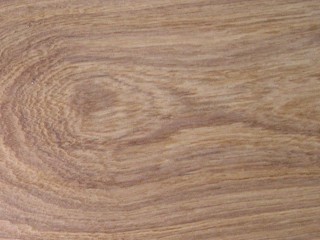 |
Burmese Teak "Tectona Grandis" Burmese Teak is used extensively in ship and boat building for decking, rails, hatches, etc. Furniture and cabinetmaking, flooring, garden furniture, chemical vats, fume ducts, laboratory benches, plywood, and decorative veneers. Burmese Teak heartwood is a uniform golden brown without markings. Grain is usually straight to slightly wavy. Texture is coarse, uneven and oily to the touch, sometimes with a white glistening deposit. Woodworking properties include medium resistence to cutting tools with a severe blunting effect. Pre-drilling required for nailing. Gluing is good on freshly planed or sanded surfaces. Fine machine dust is a skin irritant. Stains well and takes a satisfactory finish, especially an oil finish.
|
 |
Walnut - Peruvian
|
 |
Walnut (Quarter Sawn)
|
 |
Walnut: Walnut "Juglans nigra" Light to dark brown or chocolate brown. A moderate sized tree reaching about 100 feet and producing a trunk up to 60" in diameter. The Wood: Usually steamed to match sapwood and heartwood. Fine but open grain. Moderately coarse texture. Excellent to work including turning and carving. Typical Uses: Furniture, cabinets, gun stock, musical instruments.
|
 |
Wenge
|
 |
Yellowheart
|
 |
Zebrawood
|
 |
Ziricote
|
| |
|
| |
|
| |
|
| |
|
| |
|
| |
|
| |
|
|









































































































